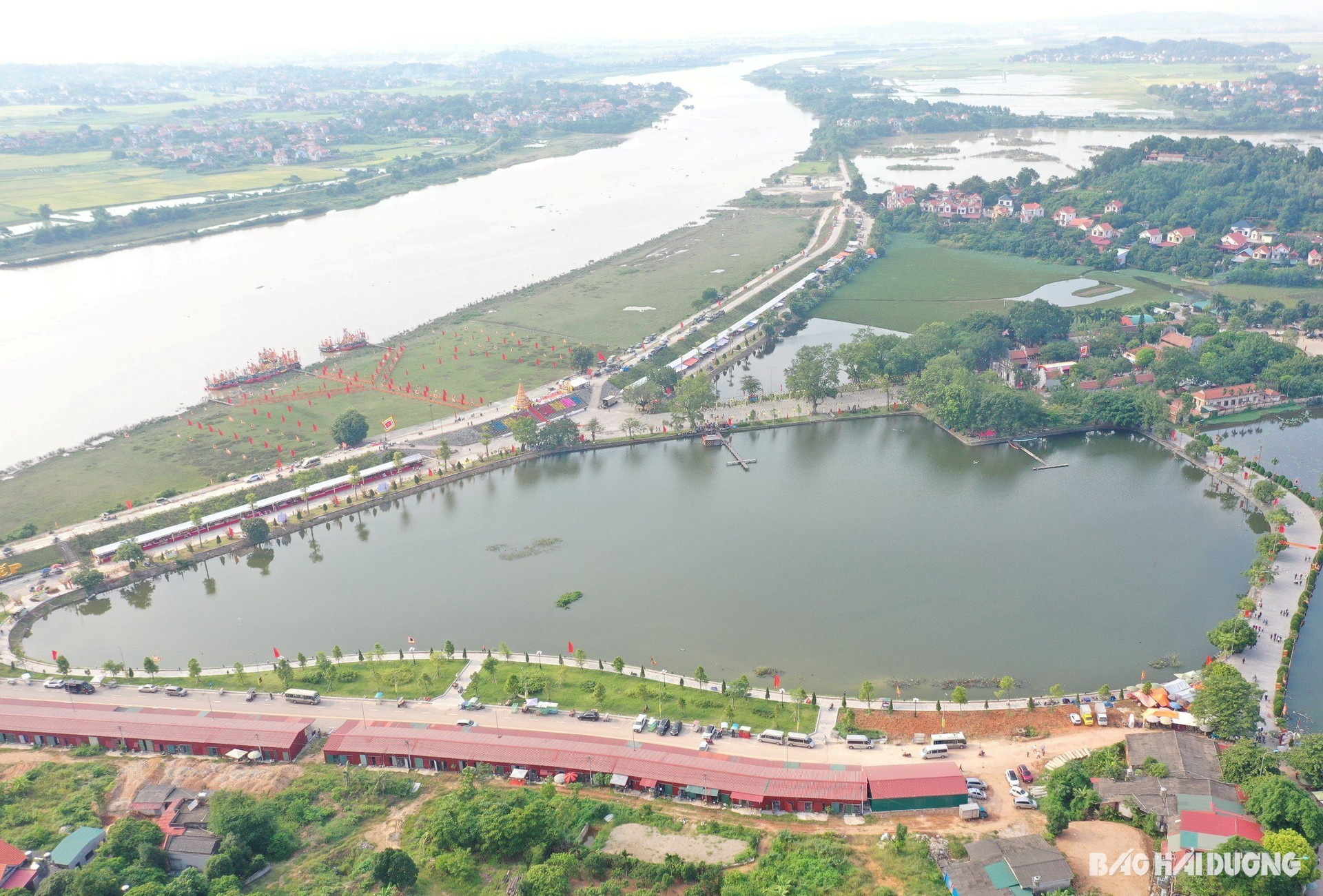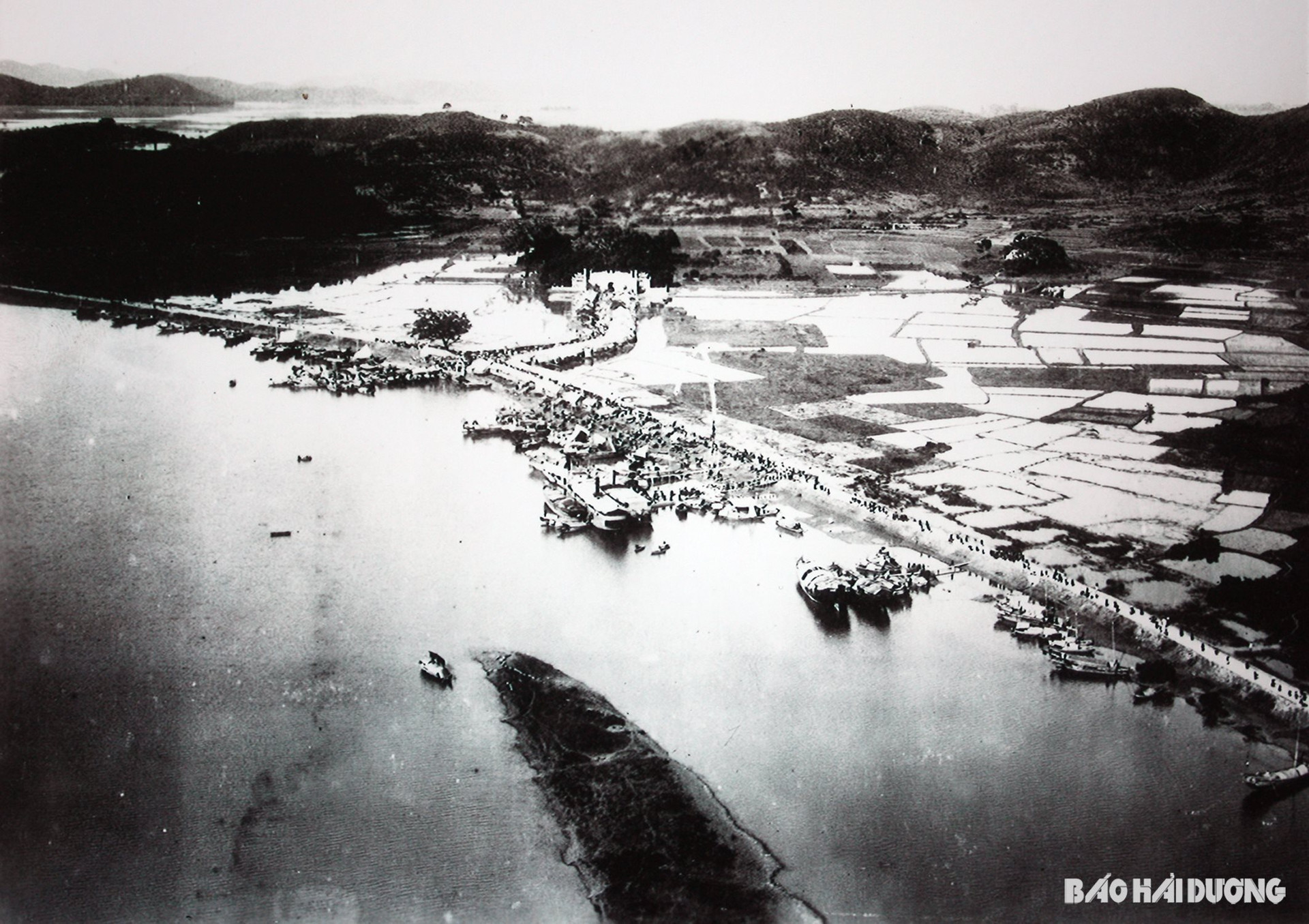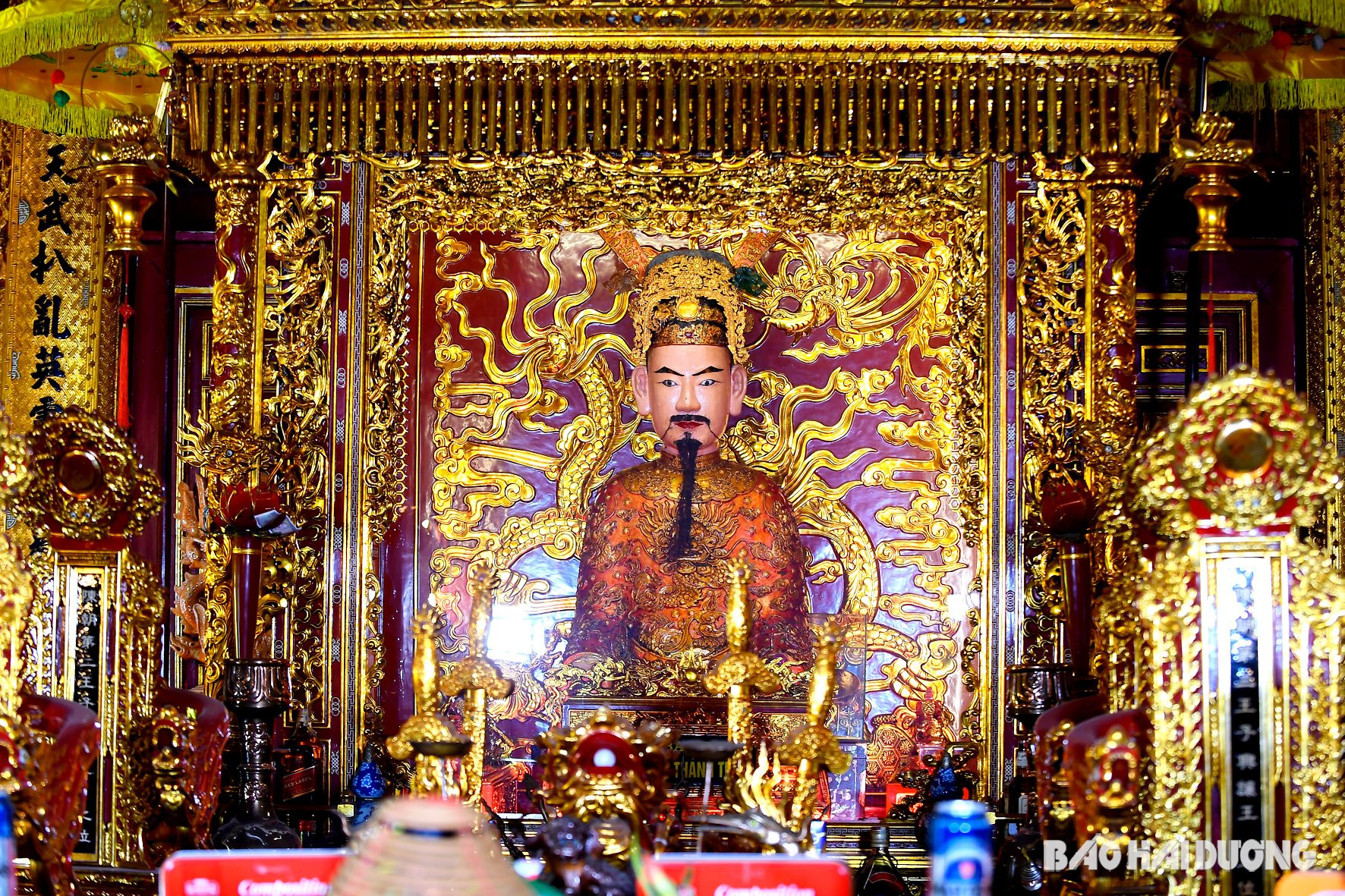Continuing the theme of the river of desire, the long passageThe river is in turmoilincludes 3 lessons:The mighty Van Kiep, Yet Kieu - The first commander of the navy, His heroic spirit is passed down.

Over thousands of years, Van Kiep (also known as Kiep Bac) in Chi Linh City (Hai Duong) has become a historical site marking many heroic feats of the nation, associated with the name of Hung Dao Dai Vuong Tran Quoc Tuan.
Key location
Kiep Bac has the Dragon Mountain shaped like a throne, surrounding the valleys of the Thuong River, which go deep into the canyon, where thousands of warships can be gathered before going into battle. To the north is a system of dense mountains and forests, where tens of thousands of troops can be hidden, establishing a safe base. To the south are rich villages, with many people, providing a great source of human and material resources for war. From the mountain tops, one can observe a vast river area, creating a "front attack and rear defense" position, becoming an important military location.
Along with that, Luc Dau River (also known as Binh Giang River or Binh Than River) is the last section of Thuong River, more than 10 km long, the widest point is more than 1 km, flowing close to the southwest of Van Kiep land, the confluence of 6 rivers including Cau River, Thuong River, Luc Nam River, Duong River, Thai Binh River and Kinh Thay River. Therefore, Van Kiep plays an important role in transportation, serving economic, political and military trade of the entire Northeast region. With an important geopolitical position, in the invasions of the North, they often go by water to Bach Dang River and then upstream to Kinh Thay River, gathering at Luc Dau River before attacking Thang Long with the infantry from Lang Son. With that important military position, throughout the history of the nation's resistance against foreign invaders, Luc Dau River has always been a strategic battle point, a military base guarding the northeast of Thang Long capital.
During the resistance war against the Yuan-Mongol invaders at the end of the 13th century, Luc Dau River was the site of fierce naval battles between us and the enemy, along with the Binh Than Military Conference of the Tran Dynasty.
After the first resistance war against the Yuan-Mongol army, Hung Dao Dai Vuong Tran Quoc Tuan (Hung Dao Vuong) returned to Kiep Bac to set up his headquarters because he realized that this was where the Northern invaders gathered to attack Thang Long. Kiep Bac could move and mobilize troops to advance and retreat, both conveniently by water and land.
The terror of the Yuan-Mongol army
During the sacred resistance war of the Tran Dynasty's army and people against the second and third invasions of the Yuan-Mongol army, Van Kiep became the area of fierce fighting between the two sides, becoming the terror of the enemy.

In February 1285 (the second resistance war against the Yuan-Mongol army), after a fierce battle with the Yuan-Mongol army at Noi Bang Pass (Bac Giang), Tran Hung Dao retreated to Van Kiep. Here, he gathered a large army.
Based on the terrain of this area, Tran Hung Dao arranged a large defense line on the Luc Dau River. He stationed troops in Van Kiep and several other locations based on the mountains on the left bank of the Luc Dau River. On the right bank, our troops were stationed at Pha Lai Mountain (Que Vo District, Bac Ninh).
Hung Dao Vuong brought more than 1,000 warships to set up a "water wing" formation ten miles from Van Kiep at the mouth of the Duong River connecting with the Luc Dau River. The Tran Dynasty's navy relied on the Dai Than floating sandbank to build a solid defense system, with warships combined with wooden stakes in the middle of the river. On the shore, wooden fences were erected as ramparts. Behind the ramparts, artillery pieces were prepared to fire at the enemy. Through the concentration of troops as well as the defense arrangement in Van Kiep - Luc Dau, it can be seen that Hung Dao Vuong was determined to carry out a decisive battle here to stop the enemy's advance.
On February 11, 1285, O Ma Nhi divided his troops to attack our bases in Van Kiep and Pha Lai mountain. A fierce battle took place on the Luc Dau river defense line, lasting for 4 consecutive days. Faced with the enemy's strong force, the Tran army and people temporarily withdrew from Van Kiep to wait for the right time.
In June 1285, in order to destroy the main army led by Thoát Hoan on the way to retreat from Dai Viet, Tran Hung Dao decided to choose Van Kiep-Luc Dau as the place for strategic battle. Here, he assigned Pham Ngu Lao to lead over 30,000 main troops along with local troops and people to set up an ambush position stretching nearly 13 km from Pha Lai to Van Kiep. When the Yuan-Mongol army arrived, they were ambushed and counterattacked by the Tran army and people, killing more than half of them. The Luc Dau River and Van Kiep field turned into a giant grave burying the invading army. Also from the fierce counterattack above, Thoát Hoan had to crawl into a copper pipe to escape death and return to his country.

During the third resistance war against the Yuan-Mongol (1287-1288), realizing the important role of the Van Kiep area, Thoat Hoan occupied the Van Kiep-Luc Dau area, turning it into a solid base before advancing. After capturing the capital Thang Long, Thoat Hoan's army gradually weakened because the army transporting food was defeated, there was a lack of food, many people got sick and were strongly pursued by the Tran army and people.
On March 30, 1288, Thoát Hoan ordered Ô Mã Nhi and Phạn Tiếp to lead the navy along Lục Đầu River to Bach Đằng estuary to return home. On the escape route from Vạn Kiếp-Bạch Đằng, less than 30 km, the Yuan-Mongol army had to wait until April 9, 1288 to reach Bạch Đằng. On this route, our army set up many ambushes to wear down the enemy's strength.
The battles in Van Kiep contributed significantly to destroying enemy forces so that our army could triumph in the great battle on Bach Dang River, officially sweeping the Yuan-Mongol army out of the country, entering a period of building a prosperous, self-reliant and independent foundation.
The current parallel sentences at Kiep Bac temple speak of the soul of Van Kiep in the heroic history of the nation:"All mountains have sword energy/Six Heads have no beginning, no sound",translation:Everywhere on Van Kiep Mountain there is a sword scent (rising up)/ Luc Dau River has no wave without the sound of autumn (roaring loudly).
Next: Yet Kieu - First Commander of the Navy
Danh Trung